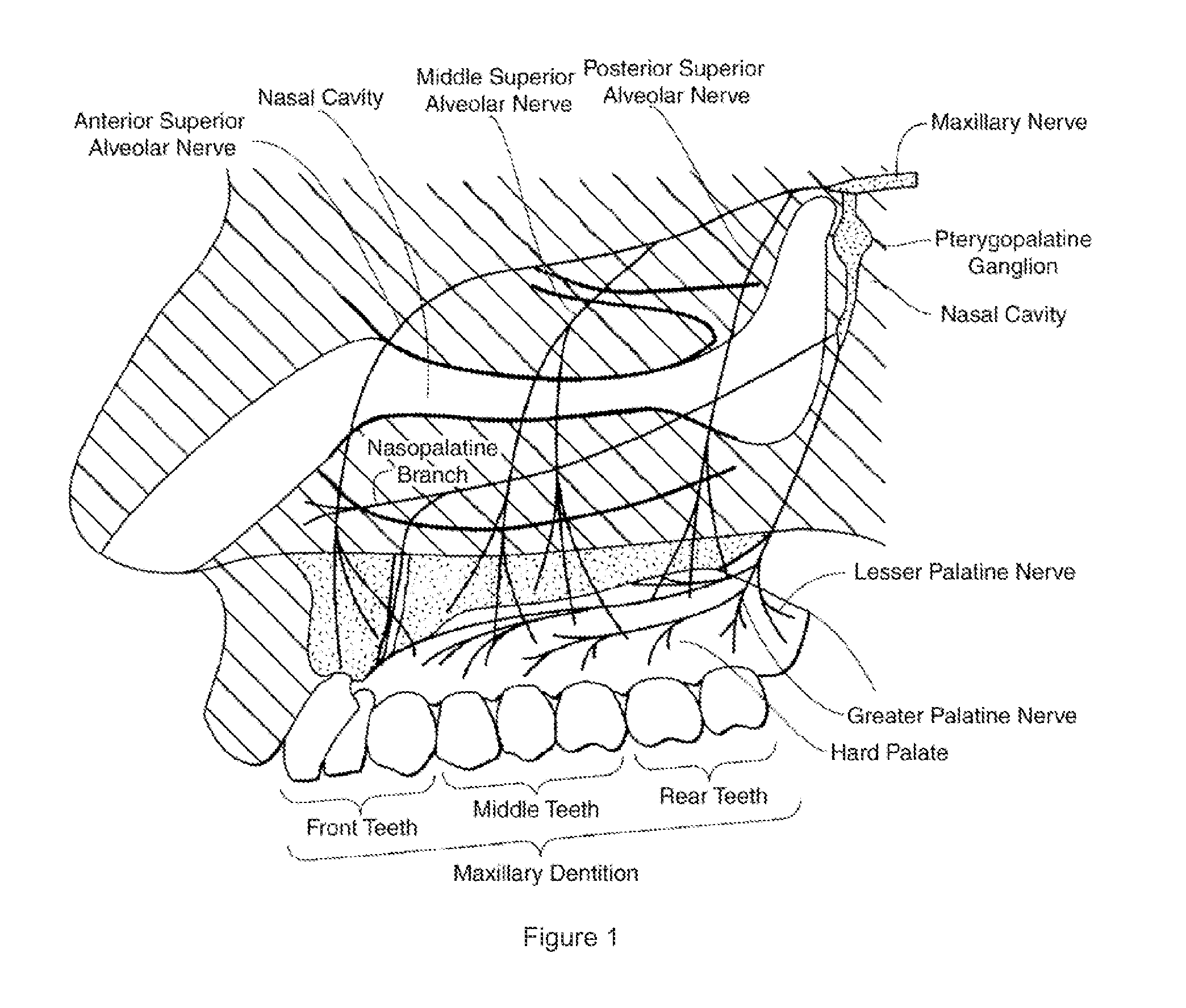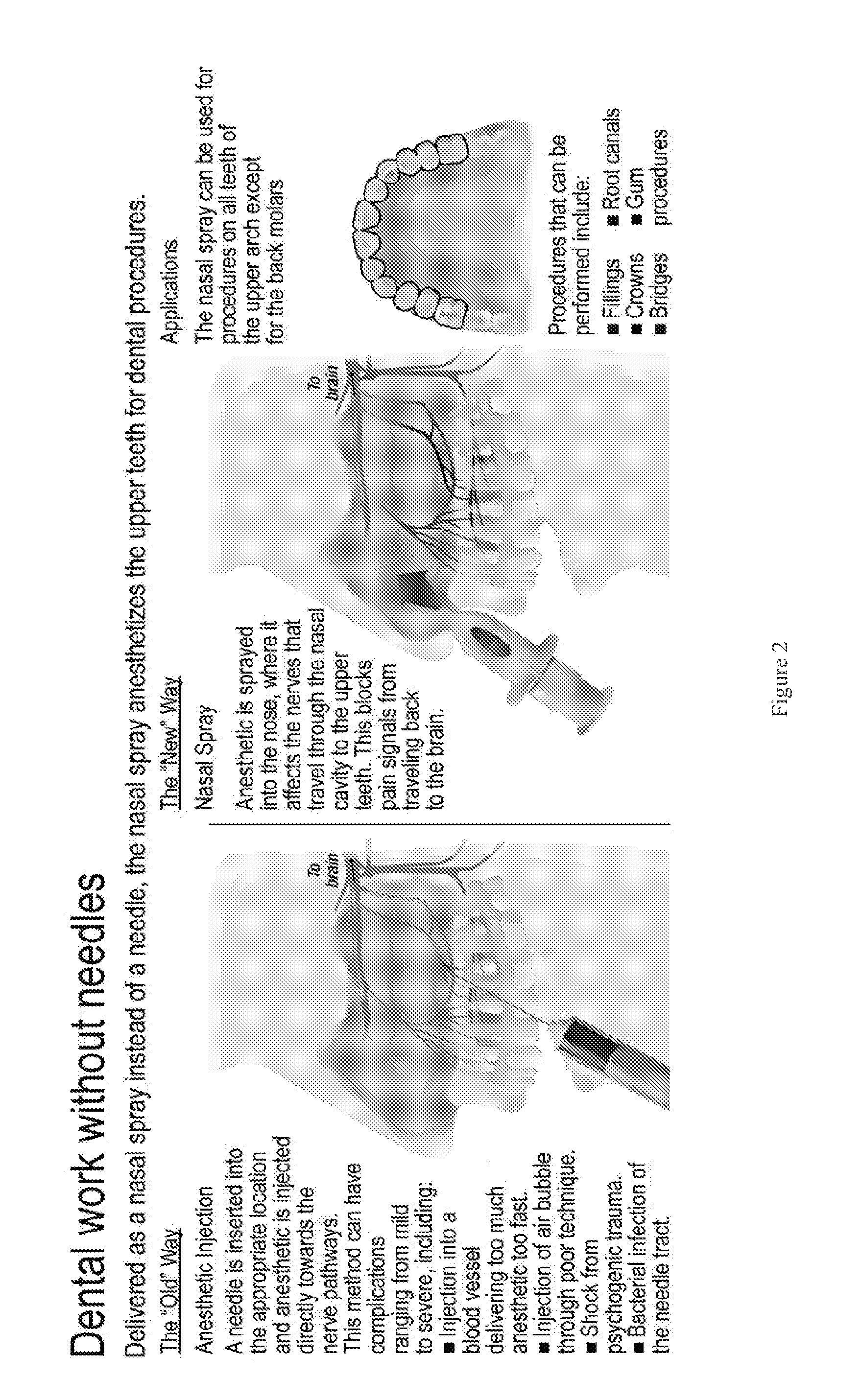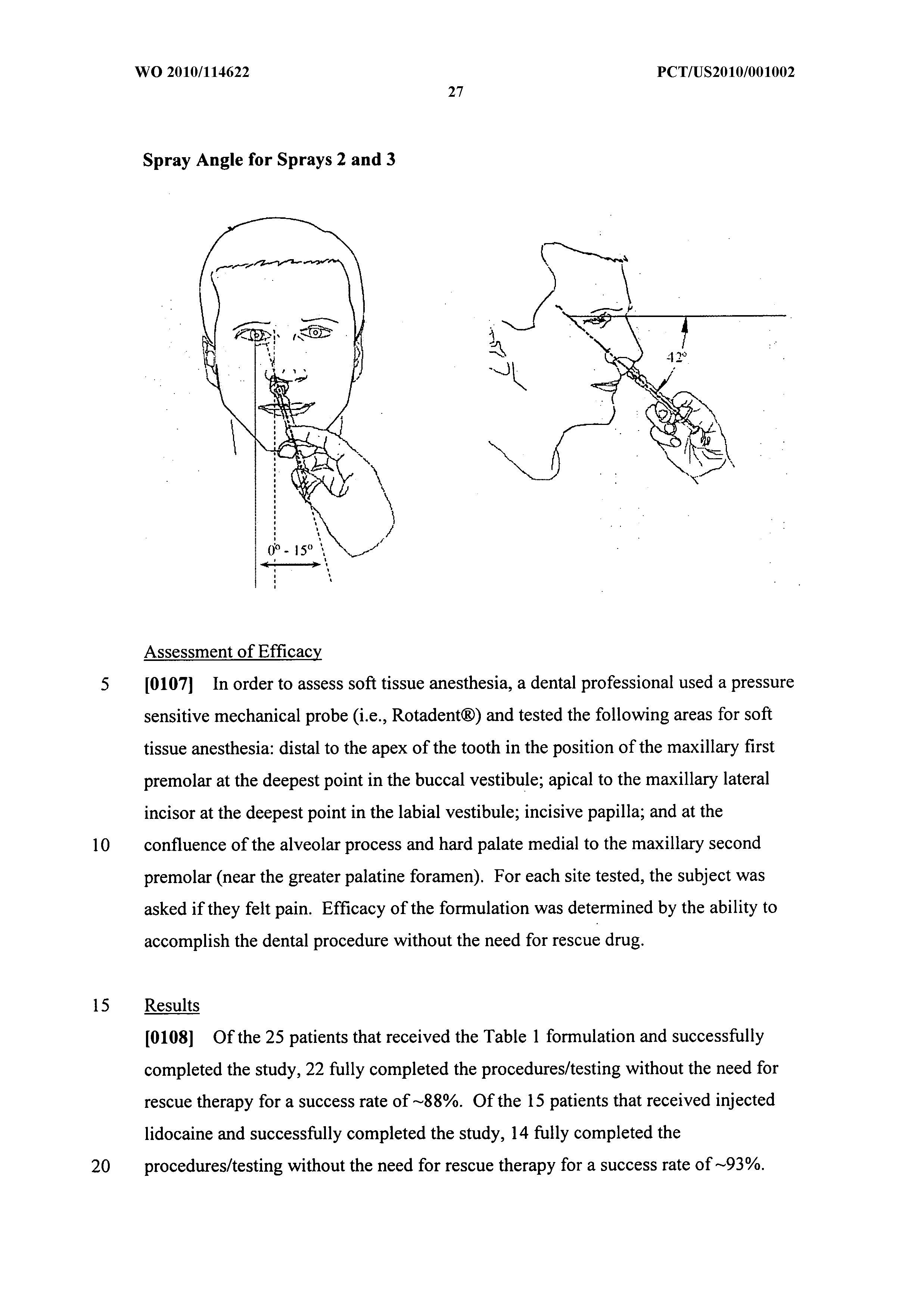Dental anesthetic comprising tetracaine and a vasoconstrictor for intranasal administration
a vasoconstrictor and intranasal technology, applied in the direction of animal repellents, drug compositions, aerosol delivery, etc., can solve the problems of cardiac arrest, respiratory collapse, cardiac arrest, and hypertension, and achieve the effects of reducing the risk of cardiac arres
- Summary
- Abstract
- Description
- Claims
- Application Information
AI Technical Summary
Benefits of technology
Problems solved by technology
Method used
Image
Examples
example 1
Identification of Effective and Safe Dosage of Tetracaine HCl Solution
[0085]The purpose of this study was to identify an effective and safe dosage of an intranasally administered tetracaine hydrochloride solution for obtaining anesthesia of the maxillary dentition. Healthy human volunteers were administered a dose of tetracaine HCl delivered as a nasal spray using a BD Accuspray™ device. The administration of the local anesthetic varied by total dose, concentration, and volume, and it included single doses in a single nostril, split doses in the same nostril, and divided doses in both nostrils. Different techniques regarding direction of spray were also investigated.
[0086]The efficacy of tetracaine hydrochloride in 80 subjects was measured by monitoring pain levels via electric pulp testing (EPT). EPT testing was accomplished by passing a current through the tooth to be tested wherein the lowest level of current is a “0” and the highest level of current is an “80.” Subjects are exp...
example 2
Dose-Ranging Study of Tetracaine Hydrochloride with Oxymetazoline Hydrochloride for Anesthetizing Maxillary Teeth
[0088]The purpose of this study, was to identify an effective and safe dosage of tetracaine hydrochloride with oxymetazoline HCl when administered by nasal spray for anesthesia of the maxillary teeth. Two formulations were administered to human patients using a BD Accuspray™ device—one with 3% tetracaine and 0.05% oxymetazoline; and another with 4% tetracaine and 0.05% oxymetazoline.
[0089]In all cases, the initial spray of the formulation was administered at a spray device angle of approximately zero degrees from the horizontal plane with the tip placed 0-2 cm inside the nostril with the subject looking straight ahead. For doses requiring more than one spray, the exact procedure set forth above was followed except the spray angle was changed to approximately 42 degrees. The efficacy of the formulation was measured by monitoring pain levels via electric pulp testing (EPT)....
example 3
Packaging of the Table 1 Formulation
[0091]Batches of tetracaine HCl plus oxymetazoline HCl nasal spray were packaged into 0.5 ml BD Accuspray™ syringe systems with a 0.1 ml fill. Microbial Limits Testing (MLT) and chemistry testing were performed on the packaged syringes. As the formulation is light, and air / oxygen sensitive, contact with light and oxygen was minimized. Nitrogen was used to blanket bulk surface during processing, holding and filling.
PUM
| Property | Measurement | Unit |
|---|---|---|
| Fraction | aaaaa | aaaaa |
| Mass | aaaaa | aaaaa |
| Mass | aaaaa | aaaaa |
Abstract
Description
Claims
Application Information
 Login to View More
Login to View More - R&D
- Intellectual Property
- Life Sciences
- Materials
- Tech Scout
- Unparalleled Data Quality
- Higher Quality Content
- 60% Fewer Hallucinations
Browse by: Latest US Patents, China's latest patents, Technical Efficacy Thesaurus, Application Domain, Technology Topic, Popular Technical Reports.
© 2025 PatSnap. All rights reserved.Legal|Privacy policy|Modern Slavery Act Transparency Statement|Sitemap|About US| Contact US: help@patsnap.com



